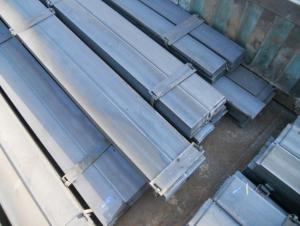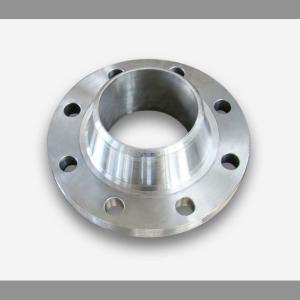Stainless Steel Elbow
- Loading Port:
- China Main Port
- Payment Terms:
- TT or LC
- Min Order Qty:
- 5 Pieces pc
- Supply Capability:
- 1000 Pieces Per Month pc/month
OKorder Service Pledge
OKorder Financial Service
You Might Also Like
Stainless Steel Fittings
Specifications Features:
1) Carbon steel fitting and stainless steel fitting
2) Standard: ASME, ANSI, API, JIS
1. BUTT WELDED FITTING:
2. Production acc. to the standard of GB /ASTM / ASME / DIN / JIS
ASTM B 16.9 /16.11 B 16.28 JIS B 2311/2220 DIN2617/2616/2615/2391
3. Types: Elbows, seamless and welded, LR & SR ,Bend -Equal and reducing Tees,
seamless and welded - Concentric and eccentric Reducers,seamless and welded -Caps
4. Wall thickness: From Sch5 up to Sch160/STD/XS/XXS
5. Material Grades: A403,WP304, WP304L, Wp316, WP316L, A234WPB
6. Dimensions: Seamless: from 1/2' up to 24'
7. size: From 1/2" up to 72"
Outer packing:Seaworthy plywood case
|
Grade |
TP304,TP304L,TP321,TP316L,TP310S etc. |
|
connection |
welding |
|
techniques |
forged |
|
Surface finishing |
180/240/320/400 grit |

- Q: What is the weight per meter of stainless steel flats?
- The weight per meter of stainless steel flats depends on the specific dimensions and thickness of the flat.
- Q: What are the features of the cold rolling flat steel machine?
- The characteristics of rapid induction heating without oxidation, the hot rod heating directly after hot rolled out requirements for the shape and size of the square, flat, and then use the method of controlled cooling to produce good surface quality and performance of qualified products;
- Q: The technological process of flat steel
- The working principle of precision steel production process of flat steel finishing machine is cold flat bad hair with two sets of upper and lower staggered leveling wheel thickness pre leveling and final leveling; with a pair of oppositely disposed finishing wheel in the width direction of extrusion, the width is compressed and reaches the expected parameters and the amount of compression can be adjusted; with 5 aspects of straightening straightening wheel arrangement of the staggered width. This system is mainly composed of a control box, finishing roller, pre leveling unit, finishing unit, straightening unit.
- Q: How do I calculate the moment of inertia for a stainless steel flat with holes?
- To calculate the moment of inertia for a stainless steel flat with holes, you need to consider the individual moments of inertia for each component of the object. First, determine the moment of inertia for the solid stainless steel flat. The moment of inertia for a rectangular plate can be calculated using the formula I = (1/12) * m * (h^2 + b^2), where m is the mass of the plate, h is the height, and b is the width. Next, calculate the moment of inertia for each hole in the flat. This can be done using the formula I = (1/4) * m * r^2, where m is the mass of the hole and r is the radius of the hole. Once you have determined the moment of inertia for each component, you can sum them together to get the total moment of inertia for the stainless steel flat. Keep in mind that if the holes are symmetrically distributed, you may be able to simplify the calculation by using the parallel axis theorem, which states that the moment of inertia of a component about an axis parallel to and a distance 'd' away from the component's centroid is equal to the sum of the moment of inertia about the centroid and the product of the component's mass and the square of the distance 'd'. It is important to note that the accuracy of this calculation depends on the complexity and distribution of the holes in the stainless steel flat. For irregular shapes and non-uniform hole distributions, more advanced mathematical methods, such as numerical integration or computer simulations, may be necessary to obtain an accurate moment of inertia value.
- Q: What are the properties of stainless steel flats?
- Stainless steel flats, also known as stainless steel bars or stainless steel rectangles, possess a range of desirable properties that make them widely used in various industries. Firstly, stainless steel flats exhibit excellent corrosion resistance. This is due to the high chromium content in stainless steel, which forms a passive oxide layer on the surface, protecting it from rust and corrosion. This property makes stainless steel flats suitable for use in environments where they may be exposed to moisture, chemicals, or harsh conditions. Secondly, stainless steel flats have high strength and durability. The addition of elements like nickel, molybdenum, and nitrogen enhances the strength and toughness of stainless steel, making it resistant to deformation and wear. This strength makes stainless steel flats a reliable choice for applications that require load-bearing capabilities or structural integrity. Furthermore, stainless steel flats offer excellent heat resistance. They can withstand high temperatures without losing their strength or becoming susceptible to thermal expansion. This property makes stainless steel flats suitable for use in heat exchangers, boilers, and other high-temperature applications. Stainless steel flats also exhibit good formability and weldability. They can be easily shaped or molded into various designs, making them versatile for different applications. Moreover, stainless steel flats can be welded or joined using various techniques, allowing for easy assembly and fabrication. Lastly, stainless steel flats have an attractive appearance. With a smooth and shiny surface, they provide an aesthetically pleasing finish that can enhance the visual appeal of structures or products. This property makes stainless steel flats popular in architectural, decorative, and design applications. In summary, stainless steel flats possess properties such as corrosion resistance, high strength, heat resistance, formability, weldability, and an appealing appearance. These properties make stainless steel flats a versatile and reliable choice for a wide range of industries, including construction, automotive, aerospace, food processing, and many others.
- Q: Can stainless steel flats be bent or shaped easily?
- Bending or shaping stainless steel flats demands greater force and effort compared to other metals, owing to its high strength and hardness. As a result, it is less malleable and more resistant to deformation. Nevertheless, by utilizing specialized tools and techniques like heat treatment or mechanical bending, stainless steel flats can be formed into desired shapes. The ease of bending or shaping stainless steel relies on factors such as the grade of stainless steel, the thickness of the flat, and the specific shaping process employed.
- Q: Are stainless steel flats suitable for the manufacturing of storage containers?
- Yes, stainless steel flats are suitable for the manufacturing of storage containers. Stainless steel is known for its durability, corrosion resistance, and hygienic properties, making it an ideal material for storage containers. Its strength allows the containers to withstand heavy loads and avoid deformation. Additionally, stainless steel is resistant to rust and staining, ensuring that the containers remain in good condition over time. The material is also easy to clean and sanitize, making it suitable for storing various types of products, including food, chemicals, and pharmaceuticals. Furthermore, stainless steel is non-reactive, preventing any contamination or alteration of the stored contents. Overall, stainless steel flats are a reliable choice for manufacturing storage containers due to their durability, corrosion resistance, and hygienic properties.
- Q: Can stainless steel flats be phosphated?
- No, stainless steel flats cannot be phosphated as stainless steel is resistant to phosphating processes.
- Q: Can stainless steel flats be soldered?
- Yes, stainless steel flats can be soldered, but it requires special techniques and soldering materials. Stainless steel has a high resistance to heat and oxidation, which makes it difficult to solder using traditional methods. However, by using specialized fluxes and silver solder, it is possible to achieve a strong bond between stainless steel flats. The process involves thoroughly cleaning the surfaces to be soldered, applying flux to promote solder flow, and using a high-temperature soldering iron or torch to heat the joint. It is important to note that soldering stainless steel requires higher temperatures and longer heating times compared to other metals. Additionally, it is recommended to practice on scrap pieces before attempting to solder stainless steel flats to ensure proper technique and achieve desired results.
- Q: What are the electroplating properties of stainless steel flats?
- Due to their inherent characteristics, stainless steel flats possess unique electroplating properties. Firstly, the high resistance to corrosion exhibited by stainless steel makes it an ideal substrate for electroplating. This attribute guarantees the integrity of the plated layer, effectively safeguarding the underlying steel from rust and tarnish. Furthermore, stainless steel flats demonstrate exceptional adhesion properties, ensuring a strong bond between the plated layer and the substrate. This quality guarantees the durability and longevity of the electroplated finish, preventing any peeling or flaking, even under harsh conditions or frequent use. Moreover, the smooth and uniform surface of stainless steel flats promotes an even deposition of the electroplated material. Consequently, this results in a consistent and visually appealing finish. Additionally, the smooth surface facilitates effortless cleaning and maintenance of the electroplated flats. Additionally, stainless steel is renowned for its high conductivity, which is advantageous in electroplating processes. This attribute enables efficient and uniform distribution of the electrical current, thereby ensuring consistent deposition of the plated material. Moreover, this property contributes to a quicker and more cost-effective electroplating process. In conclusion, the electroplating properties of stainless steel flats are characterized by their corrosion resistance, exceptional adhesion, smooth surface, and high conductivity. These qualities have made stainless steel flats a popular choice for a wide range of electroplating applications, including decorative finishes and functional coatings.
1. Manufacturer Overview
| Location | Zhejiang, China |
| Year Established | 2010 |
| Annual Output Value | above US$16 million |
| Main Markets | East Asia, Middle East. |
| Company Certifications |
2. Manufacturer Certificates
| a) Certification Name | |
| Range | |
| Reference | |
| Validity Period |
3. Manufacturer Capability
| a) Trade Capacity | |
| Nearest Port | Shanghai |
| Export Percentage | |
| No.of Employees in Trade Department | above 10 people |
| Language Spoken: | English, Chinese |
| b) Factory Information | |
| Factory Size: | about 30000 square meter |
| No. of Production Lines | above 7 |
| Contract Manufacturing | OEM Service Offered |
| Product Price Range | Average |
Send your message to us
Stainless Steel Elbow
- Loading Port:
- China Main Port
- Payment Terms:
- TT or LC
- Min Order Qty:
- 5 Pieces pc
- Supply Capability:
- 1000 Pieces Per Month pc/month
OKorder Service Pledge
OKorder Financial Service
Similar products
Hot products
Hot Searches
Related keywords




























